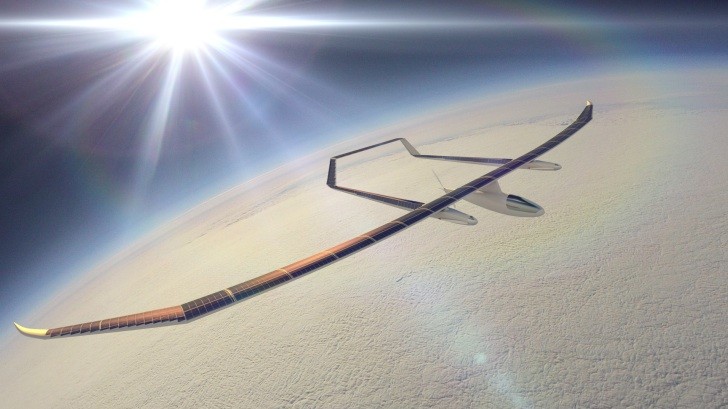Our world is now dependent on communication, be it an e-mail, a voice call, an SMS or a message over your favorite messenger app. And all these rely on expensive satellites placed on the orbit, which soon might be replaced by lower cost atmospheric unmanned planes.
Solar Flight, a company that has been designing and building flying solar-powered aircraft for about 30 years, has released details for their latest unmanned plane that can stay airborne for months at a time.
It’s called the Sunstar and is the fourth solar-powered aircraft design coming from the company, aimed to serve us as a new telecommunications platform.
The Sunstar has the best coverage of solar cells ever achieved in order to fly months or even years. To make the most out of the sun rays even at dusk, the plane comes with solar panels mounted not only on the wings, but even on the sides.
The huge wing that reunites the double tail is powered by three electric motors - two smaller ones at the front and a big rotor at the back. The front ones are used during takeoff and climbing, after which they will be shut down and cruise smoothly using the single rear rotor which is tuned for low power consumption.
The other advantage is that such an aircraft fitted with comm equipment will be able to offer a bigger range than a normal broadcast tower and an increased transmission speed.
And the whole thing is scalable, with the design using a modular approach. Wing sections can be added or removed while the middle pod is interchangeable depending on the needs. It can even accommodate a pressurized cockpit for a pilot.
In fact, that’s how the Sunstar will be tested at first, with a man having to fly it from aboard using fly-by-wire controls. If everything goes as planned, the first units could be ready in about 2 years.
It’s called the Sunstar and is the fourth solar-powered aircraft design coming from the company, aimed to serve us as a new telecommunications platform.
How it works
“What we are designing is known as an atmospheric satellite, which operates and performs many of the functions as a satellite would do in space, but does it in the atmosphere,” said chief Eric Raymond. “Uplink and downlink speeds will be far better than a satellite, due to the shorter distance.” In addition, it can provide service to a larger ground area than land-based towers."The Sunstar has the best coverage of solar cells ever achieved in order to fly months or even years. To make the most out of the sun rays even at dusk, the plane comes with solar panels mounted not only on the wings, but even on the sides.
The huge wing that reunites the double tail is powered by three electric motors - two smaller ones at the front and a big rotor at the back. The front ones are used during takeoff and climbing, after which they will be shut down and cruise smoothly using the single rear rotor which is tuned for low power consumption.
Advantages
First of all we have to mention the costs to place in position. To reach the orbit, a normal communications satellite needs a huge rocket along with tons of fuel to escape the Earth’s pull. But the Sunstar can reach the higher levels of the atmosphere on its own using nothing but electricity generated by the solar panels.The other advantage is that such an aircraft fitted with comm equipment will be able to offer a bigger range than a normal broadcast tower and an increased transmission speed.
And the whole thing is scalable, with the design using a modular approach. Wing sections can be added or removed while the middle pod is interchangeable depending on the needs. It can even accommodate a pressurized cockpit for a pilot.
In fact, that’s how the Sunstar will be tested at first, with a man having to fly it from aboard using fly-by-wire controls. If everything goes as planned, the first units could be ready in about 2 years.




